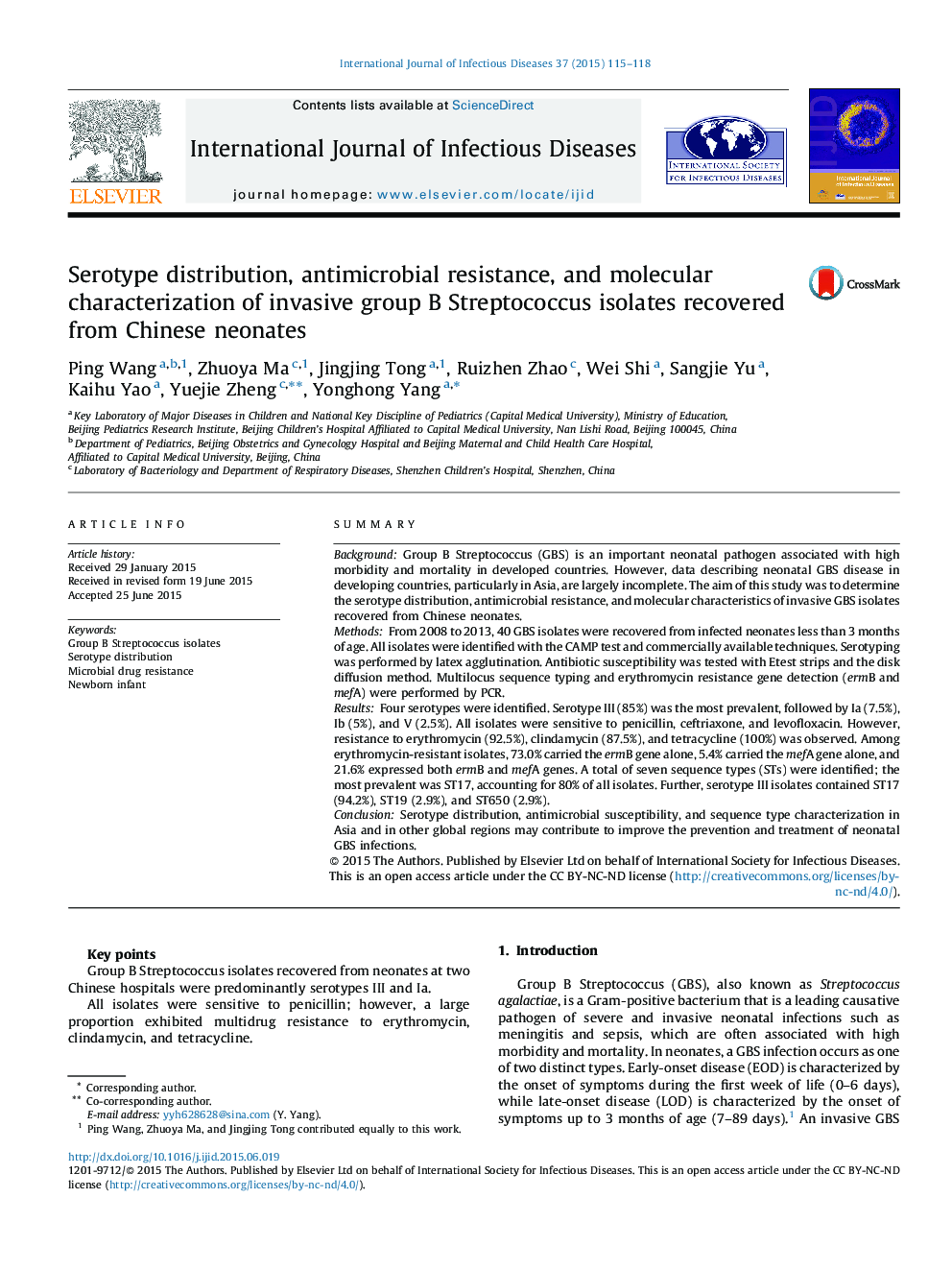| کد مقاله | کد نشریه | سال انتشار | مقاله انگلیسی | نسخه تمام متن |
|---|---|---|---|---|
| 3362114 | 1592058 | 2015 | 4 صفحه PDF | دانلود رایگان |
SummaryBackgroundGroup B Streptococcus (GBS) is an important neonatal pathogen associated with high morbidity and mortality in developed countries. However, data describing neonatal GBS disease in developing countries, particularly in Asia, are largely incomplete. The aim of this study was to determine the serotype distribution, antimicrobial resistance, and molecular characteristics of invasive GBS isolates recovered from Chinese neonates.MethodsFrom 2008 to 2013, 40 GBS isolates were recovered from infected neonates less than 3 months of age. All isolates were identified with the CAMP test and commercially available techniques. Serotyping was performed by latex agglutination. Antibiotic susceptibility was tested with Etest strips and the disk diffusion method. Multilocus sequence typing and erythromycin resistance gene detection (ermB and mefA) were performed by PCR.ResultsFour serotypes were identified. Serotype III (85%) was the most prevalent, followed by Ia (7.5%), Ib (5%), and V (2.5%). All isolates were sensitive to penicillin, ceftriaxone, and levofloxacin. However, resistance to erythromycin (92.5%), clindamycin (87.5%), and tetracycline (100%) was observed. Among erythromycin-resistant isolates, 73.0% carried the ermB gene alone, 5.4% carried the mefA gene alone, and 21.6% expressed both ermB and mefA genes. A total of seven sequence types (STs) were identified; the most prevalent was ST17, accounting for 80% of all isolates. Further, serotype III isolates contained ST17 (94.2%), ST19 (2.9%), and ST650 (2.9%).ConclusionSerotype distribution, antimicrobial susceptibility, and sequence type characterization in Asia and in other global regions may contribute to improve the prevention and treatment of neonatal GBS infections.
Journal: International Journal of Infectious Diseases - Volume 37, August 2015, Pages 115–118
